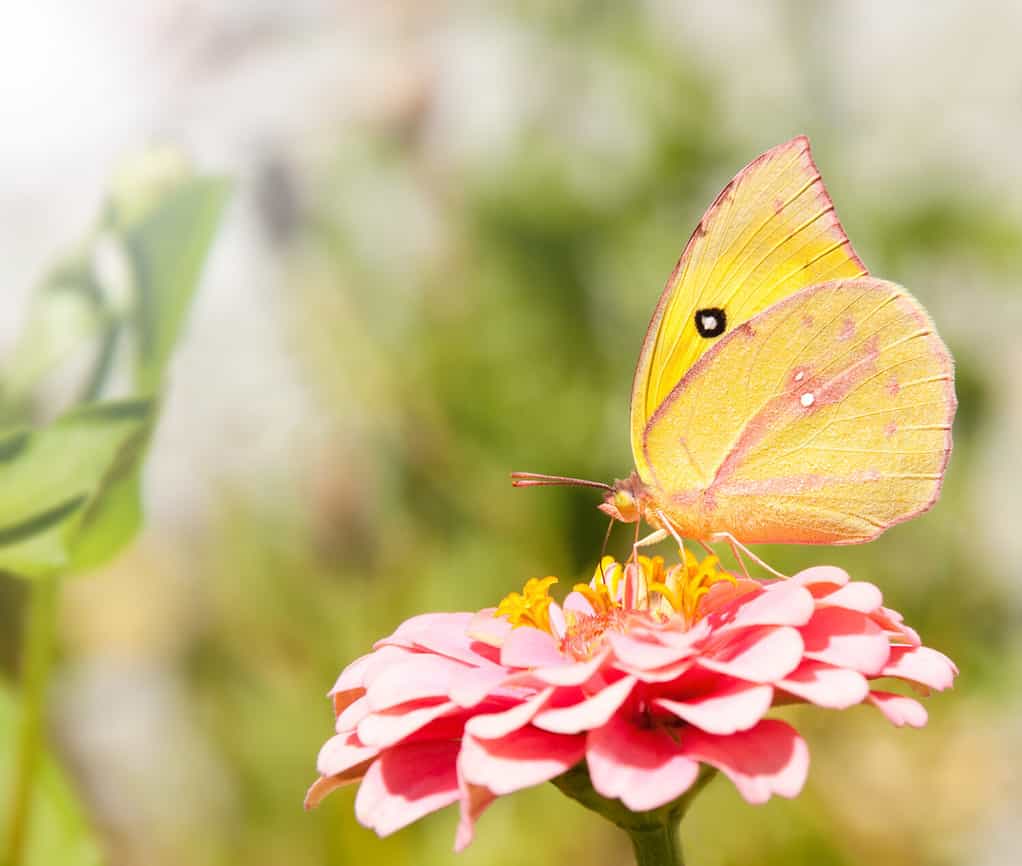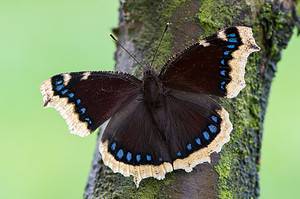You can find the beautiful dogface butterfly only in California. This lovely little bug reigns as a California state insect and graces California state driver’s licenses and a U.S. stamp.

California designated the title of California’s state insect to the California Dogface in 1972. You can find this arthropod only between north-central California and Baja California and between the Sierra Nevada and Coast Ranges. Scientists consider this species of butterfly very rare and local throughout its range.
Classified scientifically as part of the Pieridae family, the California dogface butterfly prefers a habitat in the foothill regions, and in chaparral, oak, or coniferous woodlands. Its predators include birds, frogs, toads, snakes, lizards, ants, and wasps.
Eggs
The California dogface butterfly lays eggs that start out green or yellow and then turn crimson as they continue to develop. The eggs look ribbed and flat on one side. The larvae hatch from the eggs and eventually metamorphose into adult butterflies.
Caterpillar
The dogface caterpillar is bright green with light to distinct horizontal white to pale green stripes, often with black borders all over the body. As a caterpillar, the Dogface mainly feeds on the leaves of the false indigo plant.
Pupa
The pupa of the Dogface is also green, just like the caterpillars. It is bright green because it can camouflage easily into the nature it calls home. When the Dogface completes its larval stage, they turn into a chrysalis where it hangs from silk threads. The larval stage lasts for about two weeks.
Adult Butterfly

This female dogface butterfly can be seen in foothill regions, chaparral, oak, or coniferous woodlands.
©Sari ONeal/Shutterstock.com
This species of butterfly experiences extreme displays of sexual dimorphism, with each sex displaying distinct colors. The males of the dogface butterfly are much brighter and more colorful than the females. The male’s forewings have yellow to peach coloring resembling a dogface with dark purple to black coloration along the edges. The hind wings are orange with a yellow fringe near the abdomen.
The female’s forewings are entirely yellow with a black spot. The back wings are pale cream on all four branches with a small black dot on each wing. The females are much larger than the males of this species, about one ¼ inch larger than the males of their species. The adult butterfly has a diet consisting of flower nectar from plants of the mustard family. The dogface butterfly has large eyes and scaly wings, which assist them in flying and heat insulation. Most of the body of this butterfly is covered in tiny hairs called setae which the Dogface uses to sense vibrations.
The brooding period for the dogface butterfly lasts from April to July, peaking in June. The second brood flies between August and October. These butterflies are scarce and impossible to glimpse because they fly 10-20 feet above the ground. Except for when they feed on a low flower, you will rarely see them near the bottom. It also doesn’t help that they are swift.
The Dogface is a critical pollinator for several California native plants, including the California buckeye, thistles, and tall blue verbena.
Adult butterflies are attracted to regions with very moist soils so they can feed on several species of flowers. This butterfly is especially fond of blue gilia, sunflowers, and thistle blooms.
Breeding occurs between early spring and late summer, with an average of hundred eggs per season. These butterflies begin their flight at 7 a.m. and fly until late afternoon.
Threats
Threats towards the dogface butterfly come from wildfires throughout California, which result in the closure of the habitat openings and may result in eventual overly intense fires that eradicate populations. Although the Dogface is rare, local, and subject to some threats, this butterfly exists in many occurrences. The number of events for the Dogface is between 81 to 300.

Threats towards the dogface butterfly come from
wildfires throughout California
.
©iStock.com/Dimple Bhati
Fun Facts about the Dogface
- The California dogface butterflies fly so fast that it is almost impossible to get a photograph of the insect with its wings open.
- Its name, “dogface,” comes from the wing pattern of the male butterfly. Some people think that the wings look like a silhouette of a dog’s head and that the wings look like a poodle’s face.
- In 1977, a 13-cent postal stamp of the California dogface butterfly was released in the United States. One of the stamps is still in the National Postal Museum.
- These butterflies love purple flowers and are easily attracted to them.
- California was the first state to choose a state insect; thus, the Dogface was the first ever.
- It was elected the state butterfly by a 4th-grade class.
You can check out other California state symbols here.
The photo featured at the top of this post is © Sari ONeal/Shutterstock.com
Thank you for reading! Have some feedback for us? Contact the AZ Animals editorial team.






